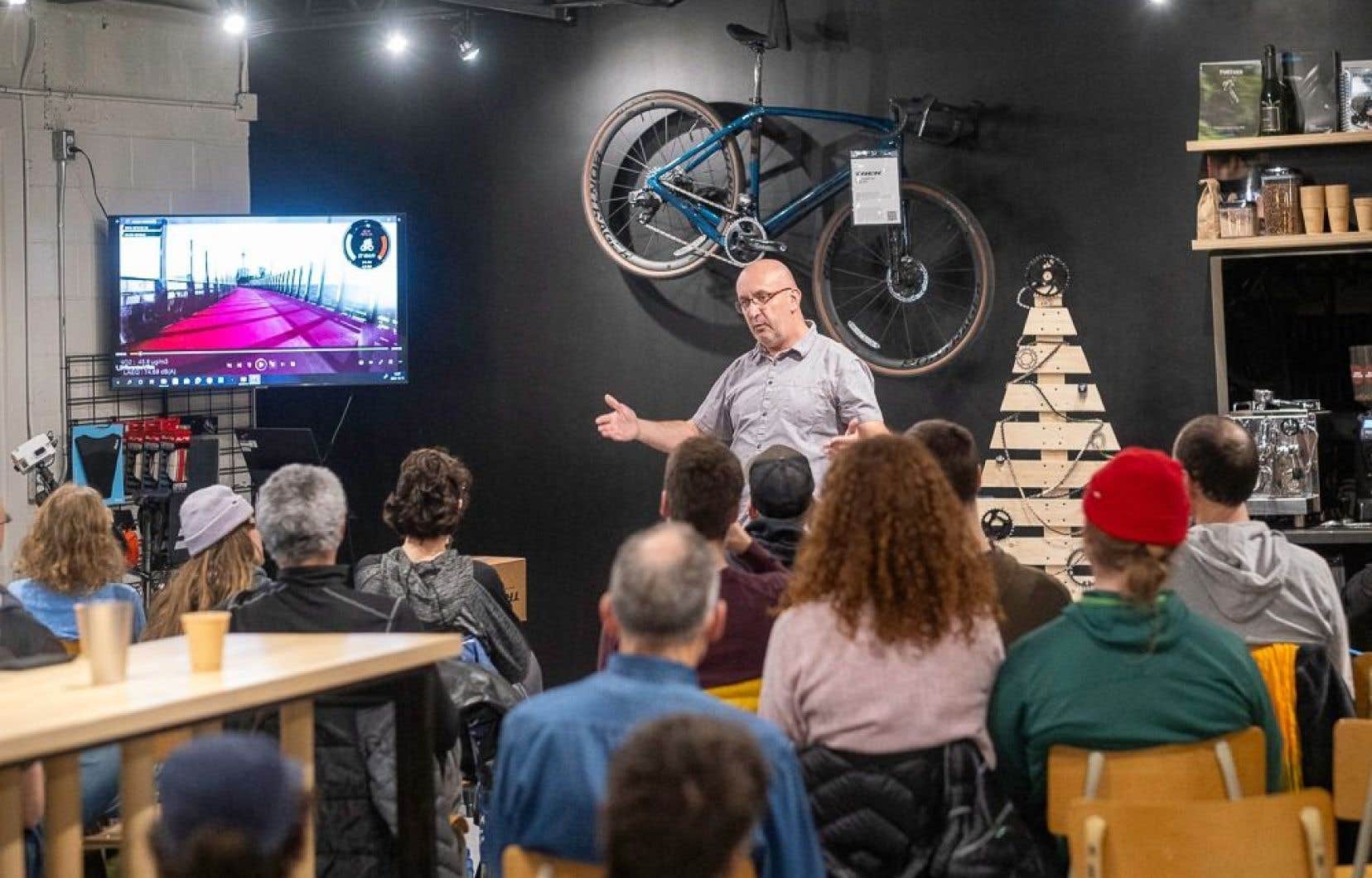From the Ivory Coast to Vietnam, via India and New Zealand, Professor Philippe Apparicio has ridden thousands of kilometers to collect data on the practice of urban cycling. The objective? Think about ways to make this active transportation more safe, accessible and efficient.
For nearly five years, the geomatics teacher at the University of Sherbrooke traveled overseas, equipped with his bicycle and a multitude of state-of-the-art sensors. Air quality, noise pollution and road safety were measured in around ten cities spread across five continents.
“The idea came from a passion for cycling and a desire to measure the exposure of cyclists to pollution in urban centers,” explains the professor of French origin, based in Quebec since 1994. Bicycles were equipped with different devices, including sound level meters to measure noise, sensors to measure the level of pollution in the air and outfits to evaluate our biometric data. »
To maximize the collection, the scientist, accompanied by two or three students on each trip, also hired local guides to be sure to cover all areas of the city. The idea was to compare the different levels of exposure to pollution depending on the routes taken and the cycling infrastructure in place.
“The guides were very useful, particularly in cities that were more complex to navigate like Mumbai,” explains the trained geographer. This allowed us to cover the cities up and down; we did 80 to 120 km per day. »
A major conclusion emerged from this study in the four corners of the planet: the further away from major roads cyclists are, the better off they are.
“With the data collected, it was observed that the levels of exposure to pollution collected in these contexts were lower. This demonstrates the importance of separating major cycle lanes from car traffic. »
Montreal, good student who can do better
After having traveled the streets of model cycling cities like Copenhagen, but also less adapted ones like Mumbai and Abidjan, Professor Apparicio is well placed to take a critical look at the Quebec metropolis.
“It always depends on those with whom we compare ourselves,” says the man who lived in Montreal for 20 years with a laugh. But when we compare ourselves to places like Copenhagen and Auckland, in New Zealand, there are really more efficient developments there which allow for greater fluidity of cyclists and much lower exposure to pollution. »
According to Philippe Apparicio, these cities have well integrated the concept of “filtered permeability”, or the capacity of a network to allow movement in complete freedom. He gives the example of the Danish capital, where bridges reserved for bicycles have been built to connect different neighborhoods in a safe and efficient manner.
“In Auckland, we also saw an old highway ramp which has been transformed into a lane for cyclists and which allows you to reach the city center quickly and safely,” he explains. It is certain that we lag behind these cities where the level of investment in infrastructure is much greater. »
Develop equitably
The cycling network in the greater Montreal region has greatly improved in recent years, thanks in part to the arrival of new mayors, he would like to mention. But according to him, development is not always distributed equitably between neighborhoods.
“It’s a question of environmental equity,” he says, referring to one of his favorite subjects. Certain neighborhoods in Montreal, for example, less advantaged from a socio-economic point of view, do not have access to the same sustainable transportation infrastructure. They are therefore overexposed to nuisances. »
“To illustrate the situation, I could joke that few people use the metro in Pointe-aux-Trembles and Montréal-Nord [ces quartiers ne sont pas desservis par des stations]. It’s a bit the same thing for cycling and cycle paths. »
Things could change soon, however. The City of Montreal announced in May 2023 that it would invest 30 million to develop the cycling network, prioritizing neighborhoods with fewer paths.
For Philippe Apparicio, cycling as a safe, accessible and efficient means of transportation requires not only investments in infrastructure, but also the establishment of a cycling culture. A real paradigm shift.
“In transport, we often say ‘build the infrastructure and people will come’. It may take time, but this is how we will develop a cycling culture,” he concludes.
This content was produced by the Special Publications team at Duty, relating to marketing. The writing of the Duty did not take part.
